Cosmology
World Models
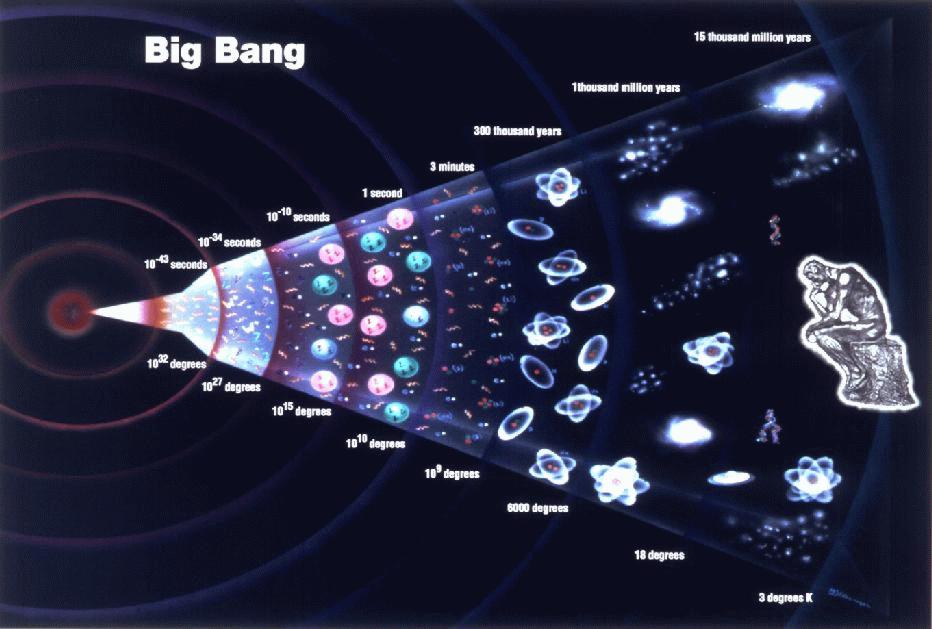 Gravity is the only interaction relevant on cosmological
scales. Gravity is best described by the General Theory of Relativity
(GR). Physical world models must thus be constructed from GR. This is
greatly simplified by two symmetry assumptions:
Gravity is the only interaction relevant on cosmological
scales. Gravity is best described by the General Theory of Relativity
(GR). Physical world models must thus be constructed from GR. This is
greatly simplified by two symmetry assumptions:
- The Universe is isotropic around us, i.e. we observe the same mean properties of the Universe in all directions.
- There are no preferred observers in the Universe. Accordingly, the Universe is isotropic around each point (otherwise we would be preferred), and thus it is also homogeneous.
Parameters
The Friedmann models are characterised by several parameters. Among them are the total matter density, the radiation density, the cosmological constant and the present-day relative expansion rate of the Universe, termed Hubble constant. The behaviour of the Friedmann models depends sensitively on these parameters. Their measurement is one of the central goals of cosmology.The Microwave Background
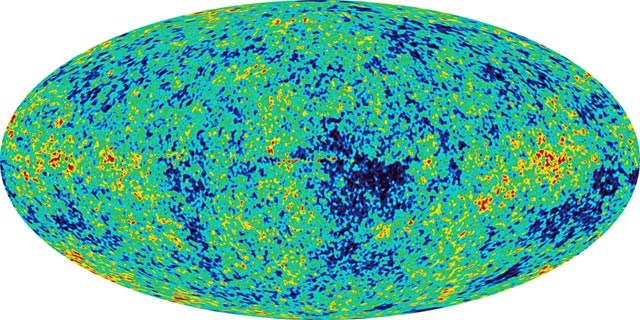 The Universe was much smaller in the past than today, and thus much
hotter. It contained photons which initially scattered off the charged
particles in the cosmic plasma. When the Universe had cooled to 3,000
degrees Kelvin, atoms formed and the photons could propagate almost
freely. They lost energy due to the expansion of the Universe, cooled
accordingly to almost 3 degrees Kelvin until the present, but surround
us in form of a cosmic microwave background (CMB).
The Universe was much smaller in the past than today, and thus much
hotter. It contained photons which initially scattered off the charged
particles in the cosmic plasma. When the Universe had cooled to 3,000
degrees Kelvin, atoms formed and the photons could propagate almost
freely. They lost energy due to the expansion of the Universe, cooled
accordingly to almost 3 degrees Kelvin until the present, but surround
us in form of a cosmic microwave background (CMB).
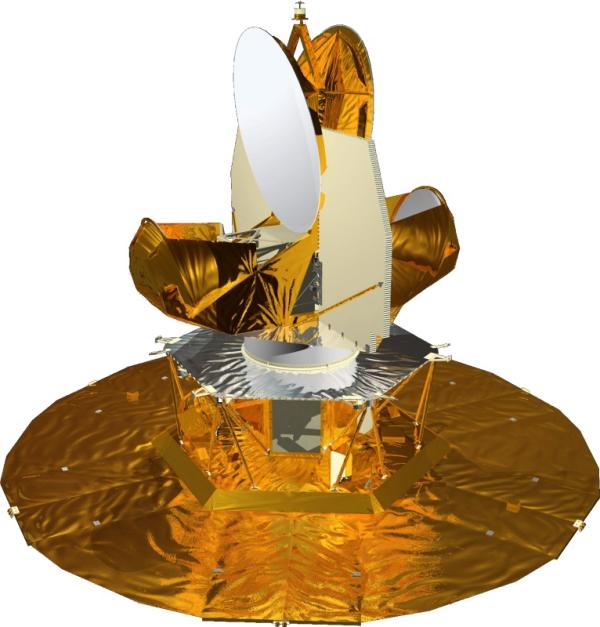 Present-day structures in the Universe were already seeded when the
CMB was set free. Tiny structures were thus imprinted onto the CMB
temperature. Cosmological parameters can be precisely measured from
the statistical properties of these fluctuations. Currently, the
American WMAP satellite (right-hand image) is observing the microwave
sky. First results (top-left image) show that the Universe is
spatially flat, originated 14 billion years ago and consists to one
third of dark matter. The rest is contributed by the cosmological
constant or some other form of dark energy.
Present-day structures in the Universe were already seeded when the
CMB was set free. Tiny structures were thus imprinted onto the CMB
temperature. Cosmological parameters can be precisely measured from
the statistical properties of these fluctuations. Currently, the
American WMAP satellite (right-hand image) is observing the microwave
sky. First results (top-left image) show that the Universe is
spatially flat, originated 14 billion years ago and consists to one
third of dark matter. The rest is contributed by the cosmological
constant or some other form of dark energy.
Cosmic Consistency
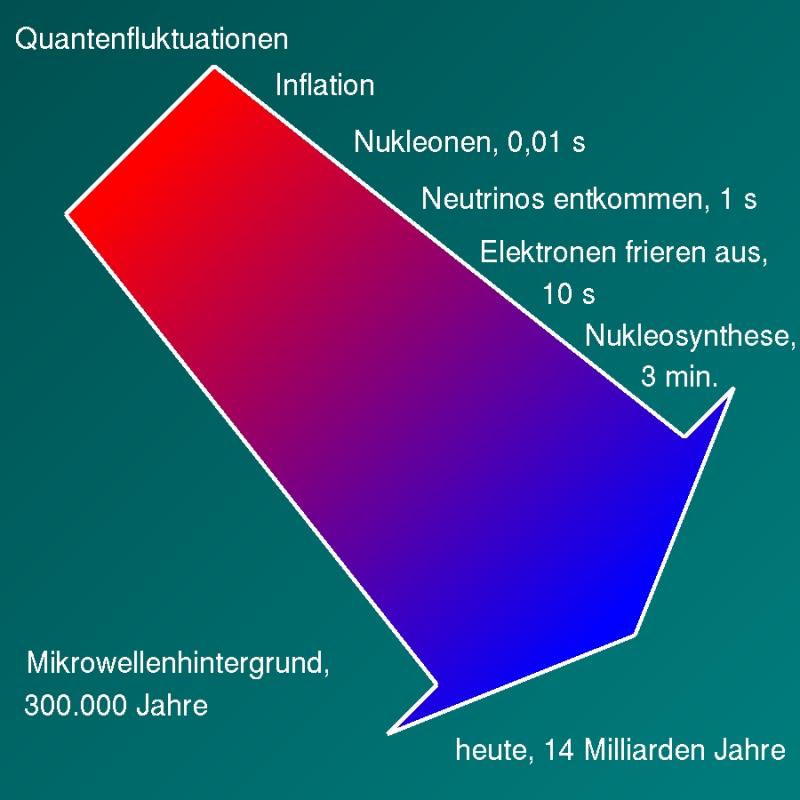 The results are supported by a multitude of other cosmological
experiments: Supernovae of type Ia support the dominating role of the
cosmological constant, gravitational lenses confirm the amount of
dark matter, galaxy clusters would have
developed much later only, the way how the galaxy distribution is
structured hints at the same low matter density, and so on. For the
first time in the history of physical cosmology, there exists a
precisely determined standard model.
The results are supported by a multitude of other cosmological
experiments: Supernovae of type Ia support the dominating role of the
cosmological constant, gravitational lenses confirm the amount of
dark matter, galaxy clusters would have
developed much later only, the way how the galaxy distribution is
structured hints at the same low matter density, and so on. For the
first time in the history of physical cosmology, there exists a
precisely determined standard model.
Open Questions
The Big Bang model is thus impressively confirmed, but only at the expense of big, unsolved questions. The most important of those are: What is dark matter made of? It is highly probable that it is composed of weakly interacting elementary particles. Those cannot be the neutrinos, however, because structures smaller than galaxy clusters could hardly have formed. By far the most successful model is that of Cold Dark Matter (CDM). What is the physical meaning of the cosmological constant? What is the dark energy? The universe expands in an accelerated way, which is enabled by the cosmological constant in the context of the Friedmann models. One possible reason are appropriately self-interacting scalar fields (quintessence, dark energy).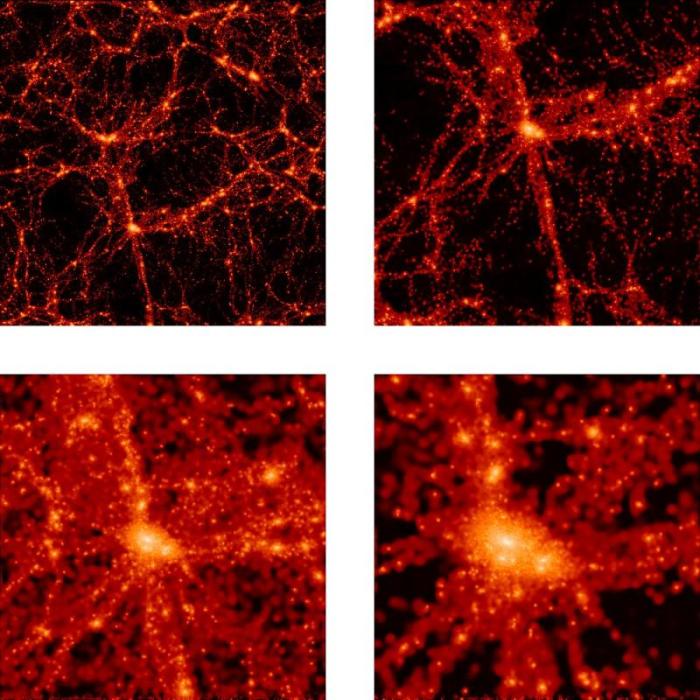 How did structures form in the Universe? We understand how
the diversity of structures could grow in the Universe, but not where
they came from. The model of cosmological inflation explains the
origin of cosmic structures from quantum fluctuations in the very
early Universe. The right-hand image shows a numerical simulation of
structure growth in dark matter.
Why is the CMB so highly isotropic? The CMB was formed
approximately 400,000 years after the Big Bang. Up until then, such
regions could not be in causal contact which were separated by more
than 400,000 light years. Nonetheless, the CMB temperature is almost
the same across the whole sky. How was that possible? Cosmological
inflation offers an answer to that question, too.
How do structures of completely different scales develop? How
did the first stars, galaxies, black holes, galaxy clusters and so on
form in a Universe dominated by dark matter and dark energy? How does
the little light that we see allow drawing conclusions on dark matter
and dark energy?
How did structures form in the Universe? We understand how
the diversity of structures could grow in the Universe, but not where
they came from. The model of cosmological inflation explains the
origin of cosmic structures from quantum fluctuations in the very
early Universe. The right-hand image shows a numerical simulation of
structure growth in dark matter.
Why is the CMB so highly isotropic? The CMB was formed
approximately 400,000 years after the Big Bang. Up until then, such
regions could not be in causal contact which were separated by more
than 400,000 light years. Nonetheless, the CMB temperature is almost
the same across the whole sky. How was that possible? Cosmological
inflation offers an answer to that question, too.
How do structures of completely different scales develop? How
did the first stars, galaxies, black holes, galaxy clusters and so on
form in a Universe dominated by dark matter and dark energy? How does
the little light that we see allow drawing conclusions on dark matter
and dark energy?
Verantwortlich: Matthias Bartelmann


